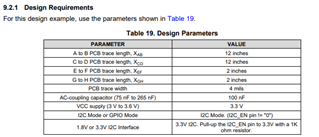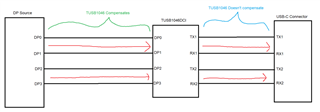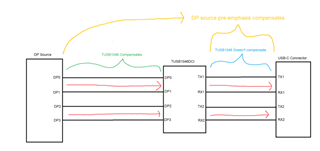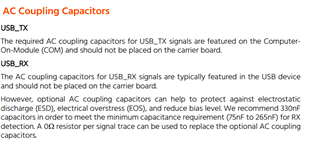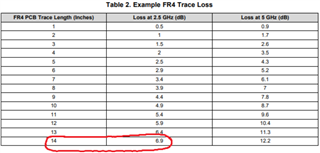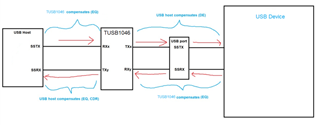Other Parts Discussed in Thread: TUSB501
Tool/software:
Hello,
I am using an MXM card and the DP traces in the are max 2 inches. On the mother board how long can my traces be from the MXM connector to the cross point switch with redriver TUSB1046AI-DCI? Is 8 inches okay or a total of 10 inches? We are using mid loss material but assume worst case as FR4 so we can only be better.
Thanks,
Divakar



